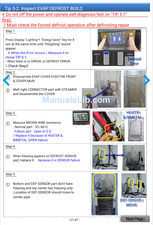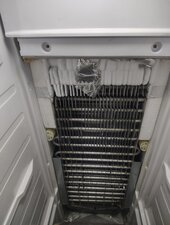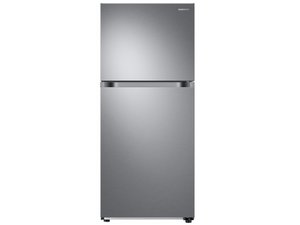Hey Karen,
Most of this information is going to be vague since I don't own that type of refrigerator nor do I have access to one. Also, I'm a DIY'er not a Professional, just FYI. Also, I'm going to assume you've made sure the doors all seal well.
Firstly, you really need to get and learn to use a multimeter. Not to be rude, but almost all appliance troubleshooting will require the use of one. They aren't difficult to use and something like this YouTube video should get you going. You won't need anything expensive, a unit like this Klein multimeter will work well enough.
Rule number 1 to remember is don't touch anything metal that is in contact with something electrified. Second thing is to be very aware of capacitors and make sure you don't touch the contacts at all! If you have to work on the capacitor, make sure you discharge it first! If you have to discharge them see rule 1. The linked YouTube video above talks briefly about capacitors. In the video he shows discharging with a resistor, but the caps he used are small. This YouTube video discusses discharging bigger HVAC caps. BE VERY CAREFUL! If you feel this is outside your comfort level, call a professional. It's not worth risking and getting electrocuted.
With all that out of the way, I worked on a fridge that was freezing up on the freezer side and not cooling on the fridge side. In this case it was the damper that controlled freezer air coming in to cool the fridge side. I could manually push open the damper door and the fridge would cool, when at temp the damper closed and couldn't open again. The part was replaced and the refrigerator worked just fine. I'm not sure if your unit has a damper, this one was located in the rear top of the fridge against the wall dividing the freezer and refrigerator.
Another unit I repaired had same issues, iced over evaporator coils and warm fridge. This was an over under unit, not a side by side. In this case the evap fan had failed. While I could turn it by hand, it was extremely stiff. When the fridge would call for cold air, the fan wouldn't spin, so no cold air blowing over then evap coils and they would ice over. Replace evap fan and unit was back to working.
When the refrigeration cycle is working you need air blowing over the evap coils, and usually over the condenser coils as well. Evap coils make cold air, condenser coils get rid of hot air. That is extremely simplified, but easy to remember.
I would suggest starting with item 7 and then moving to 8 from this iFixit guide and progress from there if need be.
There is also this page for ice build up in the freezer, but I'd start with items 7 and 8 from above.
Lastly, another site that has some good references is repairclinic.com. They usually have exploded diagrams that make finding part locations easier. You just need to enter the exact model number of you unit.
Best of luck,
Mo
crwdns2934105:0crwdne2934105:0
crwdns2934113:0crwdne2934113:0
crwdns2915270:0crwdne2915270:0
crwdns2889612:0crwdne2889612:0
1






 2
2